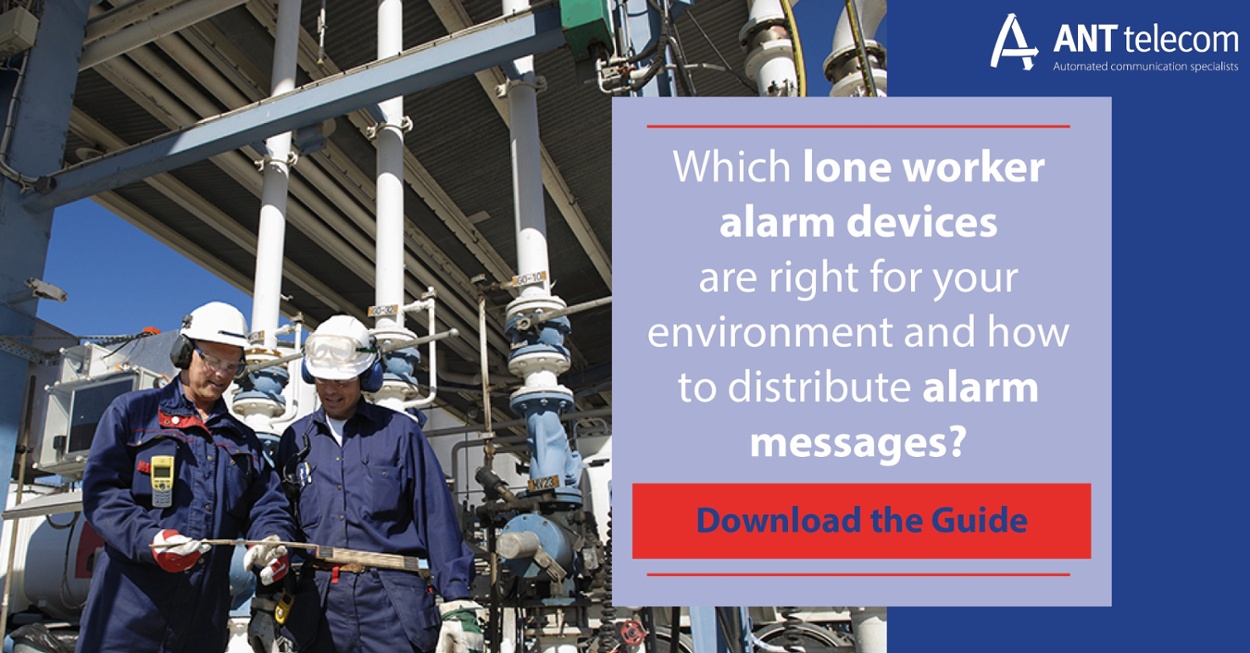.jpg?width=800&name=shutterstock_441569332%20(1).jpg)
The automated communications specialist looks at how employees communicate with and respond to alerts in the workplace
Within its research, ANT Telecom looked at the range of devices employees were utilising to communicate with colleagues, including lone workers, as well as incident reporting and response timings and the resulting impact these factors have on business continuity in the workplace.
From the variety of communications business have available to adopt, a GSM mobile solution was the most prevalent, with 76.92% confirming it as their preferred device to keep upon their person. However, the research also showed that an overwhelming percentage, 71.43% in fact, used their devices for voice only, leaving just 28.57% with the means necessary to receive real-time plant processing updates and critical alerts directly to their device. This approach is likely to affect machine downtime and product wastages as employees can’t benefit from instant alerts if an incident occurs, which is greatly beneficial to keeping production lines and machinery running smoothly. However, real-time information is of no value whatsoever if it is not used effectively. It is therefore essential to assess how machine alerts could and should be used to facilitate the quickest response possible.
Machine maintenance is also a large part of a company's communication and its impact on production was also a subject raised in the research. The majority (32%) of those who answered, confirmed that it would take between 0 and 2 minutes for an engineer to be notified, if a problem occurred with a piece of machinery on the manufacturing or production site, but over 38% stated that this would take more than 10 minutes, with 6% confirming it would take over 30 minutes for their business.
Those surveyed were also asked if their alert system automatically distributed machine or processing faults directly to a qualified engineer, who would then attend to the fault, and 73% answered no. Of course, manufacturing plants have been collecting alert information from machines for years. Supervisory control and data acquisition (SCADA) systems for remote monitoring and control are a standard component of any operating environment, providing a single view of equipment performance on a large screen in a control room. More recently, these systems have gone mobile, offering operators and maintenance engineers the chance to view the red, amber, green alerts on a tablet while on, or away from, the factory floor. That’s great. But the way in which organisations respond to these alerts is still, in the main, archaic. A red alert could prompt a generic page message to which any number of individuals may or may not respond. Alternatively, an operator viewing the red alert on the SCADA screen has to call the engineering team leader who will access a control panel to understand the true nature of the problem and only then identify and contact a team member to resolve the issue.
An overwhelming 88% of respondents felt that machine faults impacted productivity in some way and 44.44% of those questioned, thought that the time taken to detect a fault, to a qualified engineer resolving the issue, could be reduced. There are numerous ways in which businesses can address this proactively and can even be tailored towards the business’ precise needs. Direct integration between a communication system and a control panel, for example, provides immediate information about the nature of the fault. By designing and configuring a smart workflow, then ensures the communication system automatically contacts the most relevant team, such as electrical engineering, eliminating a number of time consuming manual steps. Once the designated team member has received the notification, they can confirm their attendance and, critically, provide updates on the repair resolution.
The results of this research presents some prominent issues for business that must be addressed and acted upon accordingly. In an era where increasing regulatory scrutiny is matched by rapid advances in disruptive innovation, there can be no excuse for companies who fail to take advantage of the best available technology. To optimise it, it makes sense to partner with a trusted expert, evaluate your exposure and plan for a safer and more connected future.





